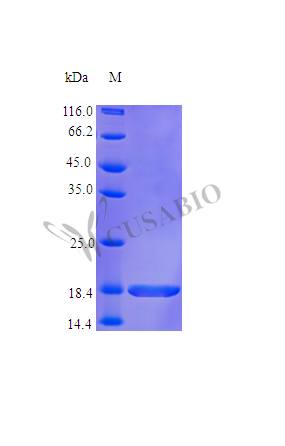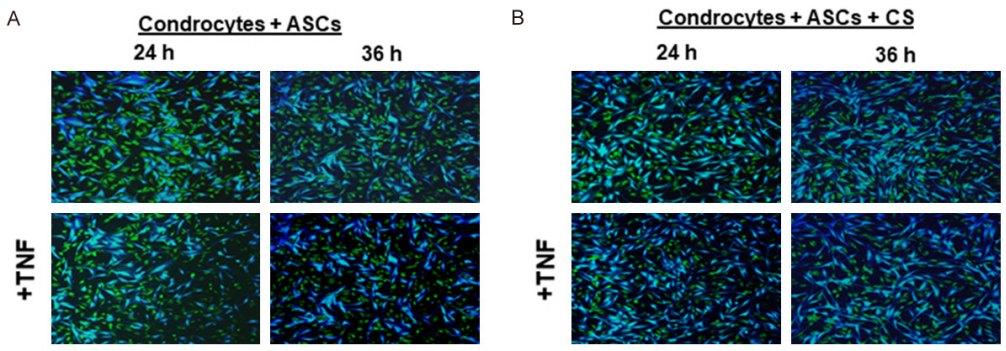This recombinant human Tumor Necrosis Factor (TNF) protein comes from E. coli production, covering amino acids 77-233 with an N-terminal 6xHis tag for straightforward purification. The protein shows high purity—greater than 97% as verified by SDS-PAGE—and keeps endotoxin levels low at less than 1.0 EU/µg, confirmed through the LAL method. It appears to be fully biologically active, with an ED50 of less than 0.05 ng/ml in cytotoxicity assays using murine L929 cells. Specific activity exceeds 2.0 × 10^7 IU/mg when actinomycin D is present.
Tumor Necrosis Factor (TNF) stands as a key cytokine in systemic inflammation and contributes to the body's acute phase reaction. This protein seems crucial for regulating immune cells, apoptosis, and inflammatory pathways. TNF has drawn significant attention in research on autoimmune disorders, cancer, and infectious diseases because of its regulatory influence on cell proliferation, differentiation, and immune response modulation.
Potential Applications
Note: The applications listed below are based on what we know about this protein's biological functions, published research, and experience from experts in the field. However, we haven't fully tested all of these applications ourselves yet. We'd recommend running some preliminary tests first to make sure they work for your specific research goals.
1. Cytotoxicity Assays for TNF Signaling Research
This recombinant TNF protein is highly biologically active (ED₅₀ < 0.05 ng/ml in L929 cells) and suitable for cytotoxicity studies. However, the partial sequence (77-233aa) lacks the N-terminal transmembrane domain of full-length TNF, and the 6xHis tag may affect receptor binding avidity. While the extreme potency confirms functional receptor engagement, researchers should validate that cell death mechanisms (apoptosis/necroptosis) match those induced by full-length TNF in their specific cell models.
2. TNF Receptor Binding Studies
The protein can be used for receptor binding studies, but the 6xHis tag may sterically hinder receptor interactions or alter binding kinetics. While the high bioactivity indicates successful receptor engagement, quantitative binding parameters (Kd) may differ from native TNF. Researchers should include tag-cleaved TNF controls and validate that binding affinity matches untagged TNF, particularly for studies requiring precise kinetic measurements.
3. Antibody Development and Validation
This His-tagged TNF serves as a convenient antigen, but antibodies may develop specificity against the 6xHis tag rather than TNF-specific epitopes. Comprehensive validation should include testing against both tagged and untagged TNF, and demonstrating that antibodies neutralize native TNF biological activity. The high purity supports immunization, but tag-specific antibodies will have limited utility for detecting endogenous TNF.
4. Inflammatory Response Studies in Cell Culture Models
The protein is suitable for inflammation studies, but the 6xHis tag may alter bioactivity in complex signaling contexts. While the extreme potency in cytotoxicity assays confirms core functionality, researchers should validate that NF-κB activation and cytokine induction profiles match those induced by native TNF, particularly for long-term stimulation experiments where tag effects may be more pronounced.
5. Protein-Protein Interaction Studies
The 6xHis tag facilitates pull-down assays but may cause non-specific binding or mask interaction sites. While useful for initial screening, identified interactors should be validated with tag-free TNF. The partial sequence (lacking the transmembrane domain) also limits interaction studies to soluble TNF signaling complexes rather than membrane-bound TNF interactions.
Final Recommendation & Action Plan
This recombinant human TNF partial protein (77-233aa) with an N-terminal 6xHis tag demonstrates exceptional biological activity, making it suitable for functional studies but requiring careful validation for binding and interaction applications. For immediate use in cytotoxicity and signaling studies, employ it at very low concentrations (0.01-0.1 ng/ml) based on the demonstrated high potency, but include full-length TNF controls to confirm physiological relevance. For receptor binding studies, the tag may affect kinetic measurements - consider tag removal or include appropriate controls. When developing antibodies, use this protein for immunization, but rigorously screen for tag-independent TNF specificity. For interaction studies, the tag is useful for pull-down efficiency but requires validation with tag-free TNF. The E. coli expression produces a non-glycosylated protein, which is acceptable as TNF functions as a homotrimer without glycosylation dependence. Always include both tagged and untagged TNF controls when studying precise molecular interactions, and consider that the partial sequence may affect some aspects of TNF receptor clustering and signaling complex formation.







